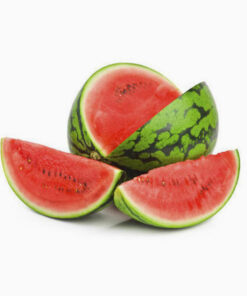Papaya Red lady F1 – pack of 10 Seeds
₹149.00
Out of stock
Email when stock available
Description for Papaya Shah Nanah
Sweet and delicious, this papaya s bright orange flesh is wonderfully refreshing in fresh salads, alone or mixed with other fruit. Plants grow to 8 feet in containers kept in full sun with temperatures above 65 F. In warm, sunny areas, plants grow fast and ripen fruit within a year. Overwinter indoors and move outdoors in the summer. Fruits are borne along the trunk and ripen from hard green to softer yellow-orange. Palm-shaped, long-stalked foliage adds to the tropical look.
Papaya tree bears many spherical or pear-shaped fruits that can have about 6-20 inches in length and 4-12 inches in diameter. The average-sized papaya weighs about a pound. The fruit is said to ripen when it feels soft to thumb pressure, and its skin has attained an amber to orange hue.
| Common name | Flower colours | Bloom time | Height | Difficulty |
|---|---|---|---|---|
| papaya, pawpaw, tree melon, | – | – | Depending on the variety, some can reach a height of 33 feet. Spread: 2-3 feet |
Easy |
Planting and care
- Growing papaya trees is generally done from seed that is extracted from ripe fruit.
- If you are using a fruit from a grocery store, it is most likely going to be a bisexual plant.
- You should plant several seeds per pot to ensure germination. Under full sunlight, seedlings may emerge in about two weeks.
Sunlight Soil Water Temperature Fertilizer Grow best in full sun. Papayas love the heat and sunlight. Papayas do best in rich soil that is high in organic matter. Make sure your planting location and soil has good drainage to avoid root rot. Water the papaya plants around the root zone as needed. The best air temperatures for papayas range from 70 to 90 degrees Fahrenheit throughout the year. Apply a complete fertilizer every two months after planting, using a formula that contains nitrogen, phosphorus and potassium, such as 10-10-10.
Caring for Papaya Shah Nanah
-
- In addition to proper papaya growing conditions, suitable care of papaya fruit trees is also important. In order for papaya trees to thrive, they require some fertilizer.
- Provide young plants fertilizer every 14 days using ¼ pound of complete fertilizer. Fertilize older trees with 1 to 2 pounds of fertilizer once a month. Also, be sure to take a soil sample and amend as necessary.
- Water trees frequently for best fruit production. Mulch trees with 4 inches of wood chips to help retain moisture, taking care to keep the mulch 8 to 12 inches from the trunk.
- Protect developing fruit from pests by placing a paper bag over them until they are ripe.
Harvesting
- You can pick the fruit when the skin starts to become yellow.
- The fruit will ripen after you have picked it.
- Handle it carefully because it gets bruised easily.
You must be logged in to post a review.








Reviews
There are no reviews yet